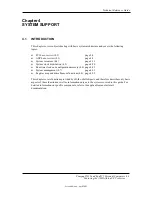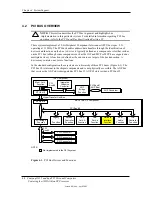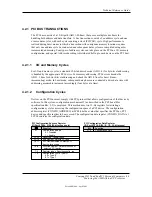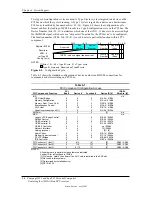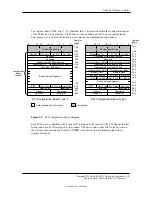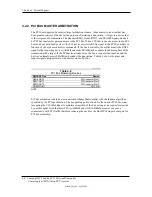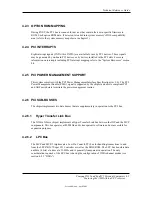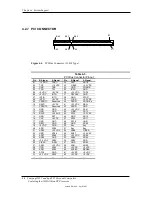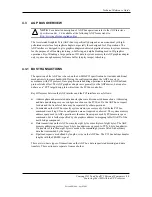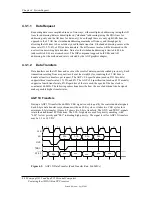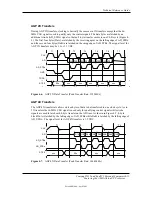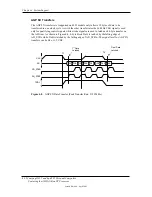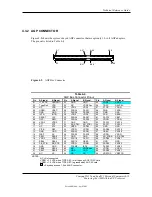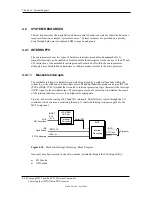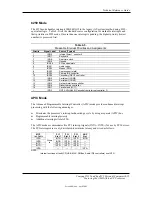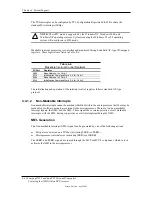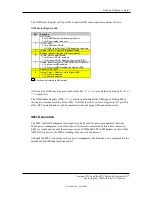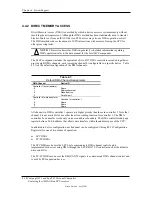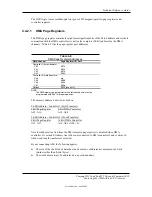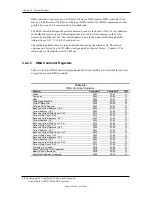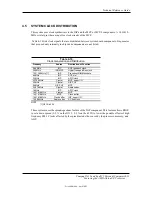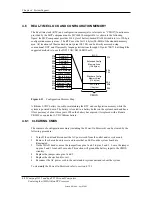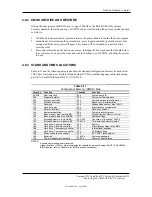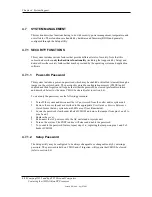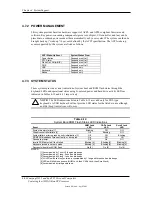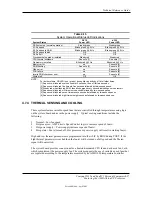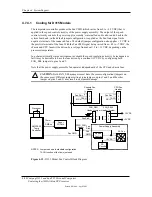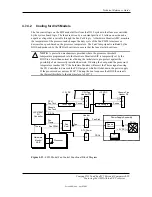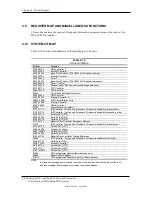
Technical Reference Guide
8259 Mode
The 8259 mode handles interrupts IRQ0-IRQ15 in the legacy (AT-system) method using 8259-
equivalent logic. Table 4-5 lists the standard source configuration for maskable interrupts and
their priorities in 8259 mode. If more than one interrupt is pending, the highest priority (lowest
number) is processed first.
Table 4-5.
Maskable Interrupt Priorities and Assignments
Table 4-5.
Maskable Interrupt Priorities and Assignments
Priority
Signal Label
Source (Typical)
1
IRQ0
Interval timer 1, counter 0
2
IRQ1
Keyboard
3
IRQ8-
Real-time clock
4
IRQ9
Unused
5
IRQ10
PCI devices/slots
6
IRQ11
Audio codec
7
IRQ12
Mouse (PS/2)
8
IRQ13
Coprocessor (math)
9
IRQ14
Primary IDE controller
10
IRQ15
Secondary IDE I/F controller
11
IRQ3
Serial port (COM2)
12
IRQ4
Serial port (COM1)
13
IRQ5
Network interface controller
14
IRQ6
Diskette drive controller
15
IRQ7
Parallel port (LPT1)
--
IRQ2
NOT AVAILABLE (Cascade from interrupt controller 2)
APIC Mode
The Advanced Programmable Interrupt Controller (APIC) mode provides enhanced interrupt
processing with the following advantages:
♦
Eliminates the processor’s interrupt acknowledge cycle by using a separate (APIC) bus
♦
Programmable interrupt priority
♦
Additional interrupts (total of 24)
The APIC mode accommodates five PCI interrupt signals (INTA-..INTE-) for use by PCI devices.
The PCI interrupts are evenly distributed to minimize latency and wired as follows:
MCP
Int. Cntlr.
PCI
Slot 1
PCI
Slot 2
PCI
Slot 3
AGP
Slot
INTA-
INTA-
INTD-
INTC-
INTB-
INTB-
INTB-
INTA-
INTD-
—
INTC-
INTC-
INTB-
INTA-
—
INTD-
INTD-
INTC-
INTB-
—
INTE-
—
—
—
INTA-
Wired
to
NOTE:
Internal functions of the MCP (USB, MAC, SMBus, Audio, IDE controllers) use INTA-.
Compaq D315 and hp d325 Personal Computers
Featuring the AMD Athlon XP Processor
Second Edition - April 2003
4-15

